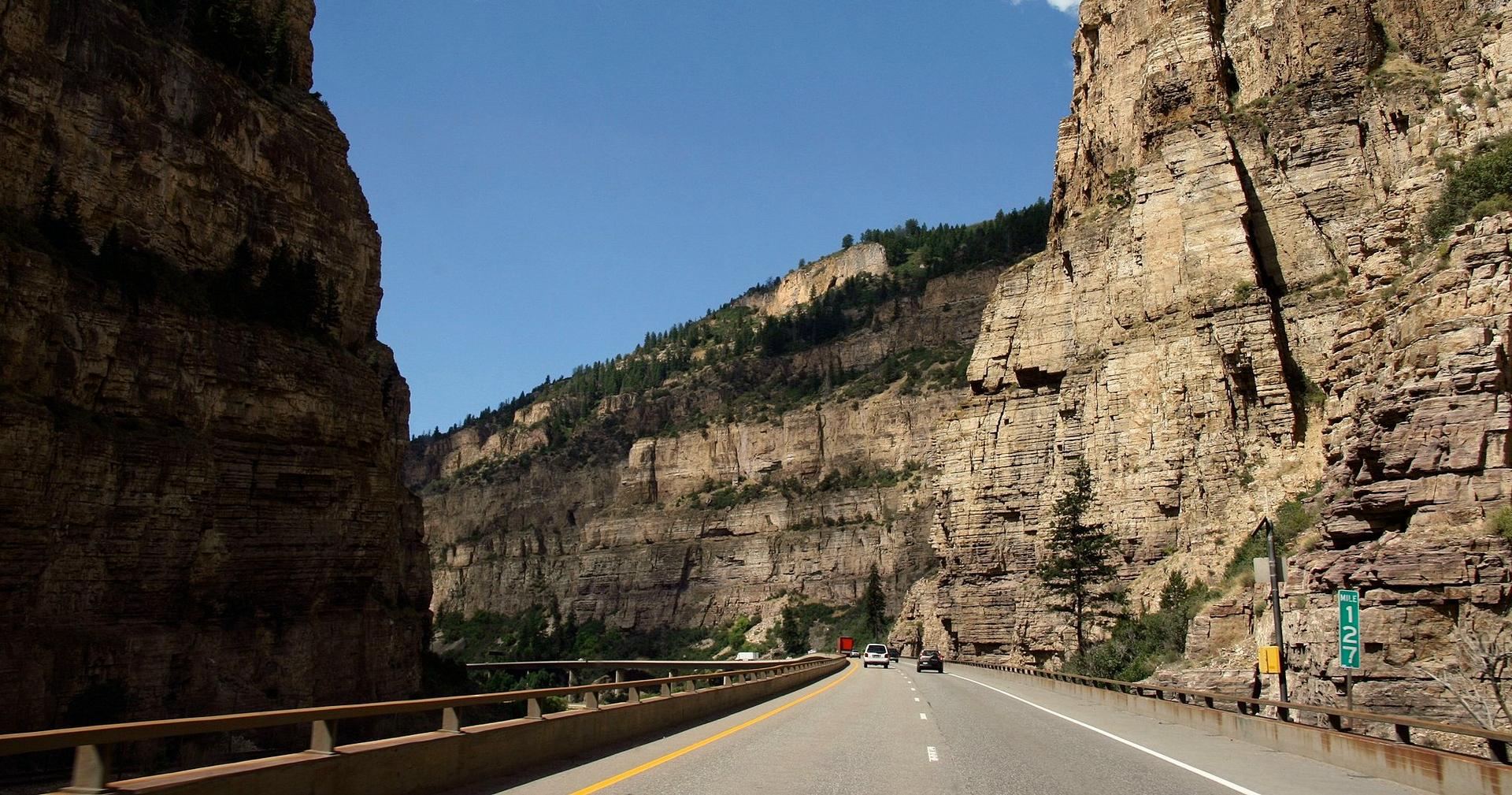Wildfire shuts down major US transportation corridor, signaling yet more climate disruption
I-70 is the only major route across the Rocky Mountains in Colorado. It passes through Glenwood Canyon, which was recently damaged by wildfires — causing the highway to shut down.
Interstate I-70 is an engineering marvel that crosses the Rocky Mountains, linking East to West. Earlier this summer, the highway was closed for two weeks because of the Grizzly Creek Fire in Glenwood Canyon. Experts say it’s just one example of the transportation disruptions that will likely worsen as the effects of climate change increase nationwide.
Steve Nieslanik, who owns an Indian restaurant called Masala and Curry in the Colorado mountain town of Glenwood Springs, felt the damage of the road closure immediately.
Prior to the Greenwood Canyon closing, his business was having the best five weeks ever, he says. Tourists were pouring over the continental divide from the densely populated Denver metro area, looking for a COVID-19 summer nearcation, and they were using the area’s biggest — really, its only — major transportation artery, Interstate 70.
“Then, when the interstate closed, it was like, none,” Nieslanik says, referring to the drop in customers.
Even in good conditions, I-70 has its share of dangers. The canyon is so steep and narrow that it can’t accommodate four interstate lanes. Instead, a massive bridge deck built into the cliffside carries the westbound lanes above the eastbound lanes for miles, as the Colorado River rushes on down below.
Paul Chinowsky, who teaches environmental design at the University of Colorado, says the cliffs and the steep grades are “perfect” areas of risk to drivers and to the roadway — from boulders coming down, flash floods, avalanches and other hazards. When these roads were built, he notes, engineers based their design and judged the risk factors on their perception of the local environment at the time. Now, with climate change, all these factors are shifting, Chinowsky says.
“Increased drought and heat, coastal flooding and more heavy rain events — all of it will decrease the reliability of the nation’s travel infrastructure and increase the cost to maintain it.”
Chinowsky helped write the transportation chapter of the most recent national climate assessment. One section reads, “Increased drought and heat, coastal flooding and more heavy rain events — all of it will decrease the reliability of the nation’s travel infrastructure and increase the cost to maintain it.”
Related: A perfect storm of factors is making wildfires bigger and more expensive to control
Two months after the Glenwood Canyon fire closed the interstate, a section of highway is still reduced to one lane of traffic each way. The canyon walls, which consist of striking horizontal layers of crumbling rock, hundreds of feet high — normally covered in greenery — are black and charred.
On a recent tour of the canyon for state officials, Colorado Department of Transportation executive director Shoshana Lew noted that with the stabilizing vegetation now gone from the cliff sides, this stretch of highway will see problems for years: More rock slides, avalanches, and closures from future rain and snow storms — which climate change makes harder to predict.
Lew says her department does have a team of geohazard experts. “They know what to look for, when a rock could be vulnerable, and they know how to identify when we need to take rocks down in order to avoid them falling into the road,” she explains. The US Geological Survey is also placing monitoring devices through the stretch to help landslide prediction models, and the US Forest Service is looking into the potential for revegetation.
Related: What Aboriginal Australians can teach us about managing wildfires
But with this recent Interstate 70 closure, the cascading consequences of the climate emergency — some of them economic — become readily apparent.
Greg Fulton, who runs a Colorado trade group focused on the trucking industry, says locals view I-70 as “almost our own little neighborhood street” — but, of course, it isn’t. “Businesses and consumers throughout the country get affected when there’s any significant closure of this highway,” he says.
There just aren’t many reliable ways for a semi truck to cross the Rocky Mountains. Fulton says the other options in Colorado are twisting and don’t have much in the way of passing lanes. Nor is there any truck parking.
Fulton says truckers outside Colorado will often opt to bypass the state entirely during an I-70 closure, which means more mileage, more time and more cost.
On Shoshana Lew’s Glenwood Canyon fire tour, Colorado senator Michael Bennet tried to paint the disaster as an opportunity.
“We need to put more people to work in our forests doing the fire mitigation and the work that can be done to help prevent these fires from happening in the first place, and make them easier to fight when they happen,” he said.
That could mean a lot of jobs in the rural West. Congress would have to pay for these jobs, however, and the American Society of Civil Engineers estimates there is already a $1.2 trillion dollar gap in funding for travel infrastructure across the nation. And that’s before the impacts of climate change are taken into account.
This article is based on a report by Colorado Public Radio reporter Dan Boyce that aired on Living on Earth from PRX.
